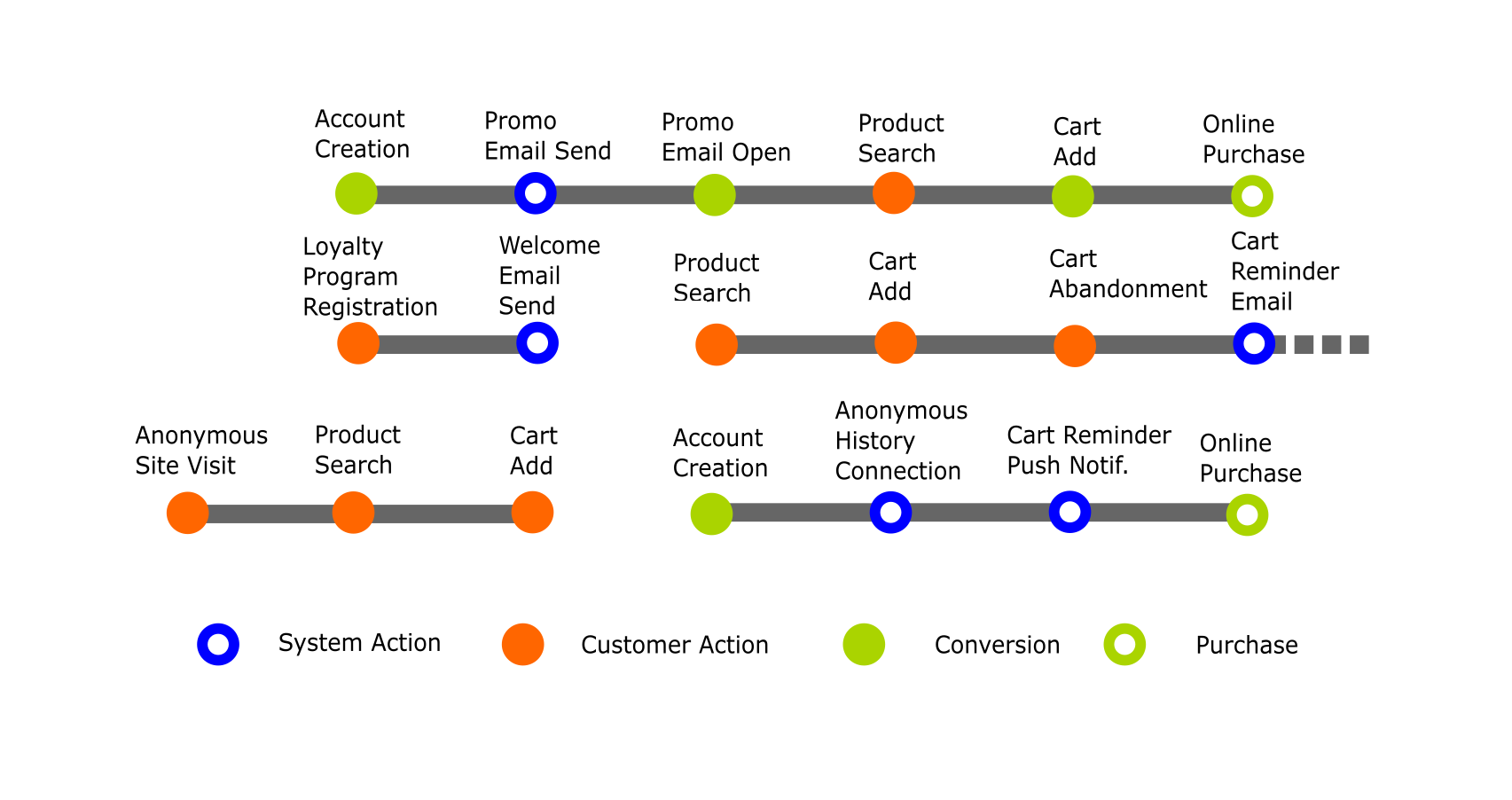Data Entropy and Other Cosmic Marketing Challenges
The universe is defined by the slow, unending and ultimately fatal loss of energy. The same principle applies to your marketing data. Are you doing everything possible to make sure your data stays recent, clean, actionable and available to all your channels?
by Taylor Bastien – 8 min read

en·tro·py [ˈentrəpē]
- PHYSICS - a thermodynamic quantity representing the unavailability of a system's thermal energy for conversion into mechanical work, often interpreted as the degree of disorder or randomness in the system:
- lack of order or predictability; gradual decline into disorder
In a competitive market, staying on top of branding challenges is critical, but so too is keeping your marketing data up to date, clean and aligned with your overall marketing strategy. Let's examine, in broad strokes, how to fight the good fight against the slow degradation and eventual chaos caused by data entropy.
Fighting Entropy
The universe is defined by the slow, unending, ultimately fatal loss of energy. After all, even the brightest star is slowly spiraling down towards an eventual "heat death".
This same principle applies to your digital marketing work. You're always bleeding customers, relevance, attention. Your brand identity needs to be kept current and under control. Your products or services and how you sell them require constant vigilance in a world where obsolescence is always a hair's-breadth away.
The only thing in this world that ages faster than data might be fashion, which is often old by the time it hits the shelf. Every day, every single byte is another 24 hours out of date. Are you still capturing the info you need? Is your data clean and available to all your channels? What unknown information will be critical tomorrow but needs to be captured today?
Your Brand Requires Constant Attention
The creative people who manage your brand and generate your content are constantly trying to keep ahead of the curve. On a daily basis, they come up with clever new designs, engaging visuals and punchy copy. Their work helps maintain and improve your position in the market, and in verticals with a heavy emphasis on design and customer experience, such as fashion, automotive and consumer technology, creativity is nothing less than a survival skill. It's critical to keep a close eye on ever-changing trends while still differentiating yourself from the pack. It may be a stimulating challenge to succeed in a competitive space but it certainly isn't easy.
If your brand is on the move, then so is the competition's. How then can you avoid falling behind in the global stampede for relevancy?
Your Data Needs Attention, Too
If you invest all you must in establishing and maintaining your market presence and brand perception, you can't then suddenly turn away from your responsibility to maintain a first-class marketing data practice. If you're using targeting or personalization on any scale, you need data. Good data. Clean data. Recent data. If you're guiding your communications across every customer touchpoint using data, you need a comprehensive profile and record of transactions, messaging, feedback and sentiment.
Like any high-performance engine, targeted digital marketing in ecommerce requires a lot of different types of data:
- Product and inventory
- Website and app analytics
- Loyalty program activity
- In-store (i.e. brick and mortal) analytics
- Call center phone notes/logs
- ...and more
If you are indeed capturing all of that information, how are getting it all into a consolidated, up-to-date profile? Can you convince those systems to work well together? It's not always immediately obvious how that's even possible. On top of it all, how can you measure the ROI of all that effort?
The answers vary. You don't actually have to do everything at once, or even ever. You need to focus, prioritize, and that all starts with preparing a current "Situation Report" or SitRep.
One way to consolidate and manage your data from various sources, including 1st party and 3rd party data, is a Customer Data Platform (or "CDP"). That's a broader discussion for another time but it's a tool worth considering if you're looking to get your arms all the way around your customer data and could use some help.
Contact us if you'd like to discuss how a CDP could solve many of your customer data problems.
SitRep - The (Current) Situation Report
Before you can draw a meaningful data roadmap, you need to know where you stand. That means cataloguing all of the hard (official) and soft (unofficial, anecdotal) data sources you have access to. Qualify the state of each source:
- Fields captured - Each individual piece of data.
- Source - Who creates this data, where/who does it come from?
- Recency and Churn - How old is the data? How often is it updated?
- Triggers - What events (if any) will trigger a new record or an update?
- Regulatory/Governance - Are there any concerns around this data that need consideration?
Ideally, you can draw up a picture of the flows through typical customer journeys and position each spark of data interaction somewhere on that graph. Both data capture and data creation events matter, as do the types of information that are captured and how that information can be legally/ethically stored and used.
These points of contact with the customer are ultimately what will fuel the success of your data-driven strategy, as we steer your leads towards meaningful conversions using powerful personalization, recommendation and targeting tools.
Throughout this process of identifying current and potential data capture and use cases, we must remain vigilant to comply with both the regulatory limits on data privacy and corporate policies governing the use of customer-related data. While this is all part of the risk-management portion of our work, it helps us sharpen our pencils to be intentional in all of our efforts. No waste or excess, no opportunity missed. This commitment is critical if we are to overcome the forces of data entropy: data that is understood and well managed is easier to keep clean, compliant and up-to-date.Roadmap to the Future
The next step is to map out -- guided by your established Strategic Priorities and fed by the SitRep -- a realistic but aspirational set of goals. Those will fall under the short to longer term and will provide us with a skeleton to fill out with concrete actions to take and systems to leverage or establish.
You should evaluate each of the following:
- Each piece of data that's being captured, whether on purpose or incidentally
- The value of each data point (e.g. Will knowing X improve your ability to convert a lead?)
- The opportunities along the journey where pieces of that data could be useful to improve conversion rates (e.g. personalized recommendations) or client retention (e.g. after-sale support information, best practices, answers to common questions)
- The urgency of each opportunity
- Immediate action
- Short-term action
- Long-term "aspirational" action
- The gaps in your data capture process
- The data that is being captured that shouldn't be (not insignificant consideing current regulatory risks)
This will give us enough information to prepare a data strategy, both for the human process and the systems that will be required. From there, as consultants, we at Stable Orbit typically do an analysis of the current state of your technology/systems and prepare recommendations for minimal and "aspirational" improvements (if any exist). This process is an open discussion around the value of the individual pieces of data (e.g. the projected revenue for each expected tick up in conversions, including up- and cross-sales) and the cost to achieve those improvements. We then pull together recommended platforms/solutions and with a rought cost estimate. Given the green light, we plan then execute the plan.
Because the execution phase (it's a lot more fun than it sounds) is a pragmatic exercise in achieving measurable results while managing costs, the outlay in effort and investment can be split up into phases, organized to fit into fiscal constraints and throttled based on the ability of your team to support the rate of transformation. This is a team effort, so both our people and yours need to be in synch and delivering together.
Where From Here?
Keeping data entropy at bay is possible, and developing a sharp focus on the realities of data's fickle nature allows us to maintain the required discipline to succeed. That positive drive forward is an opportunity to improve the efficiency of and return on our marketing investments. Besides, the technology involved is a lot of fun to work with. When your data "knows" your customers well, it closes the gap between the ask and the offer -- a critical conversion boost and a potential revenue generating game-changer.
There's nothing more valuable than time, and few things are more satisfying than getting what we want, as quickly as possible at a price we're happy to pay. With a well-designed data flow and an engaging customer experience, the sky's the limit to what we can achieve with a clear vision, focused effort and creative imagination.
Even the laws of physics can't stop us, though they'll surely try.
Are you up against data entropy challenges of your own? Have you had success in this struggle against data obsolescence? I love talking shop, so if you'd like to continue this conversation in person, drop me a line on LinkedIn or email
 Stable Orbit
Stable Orbit

